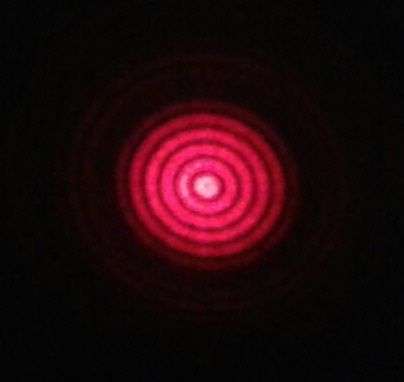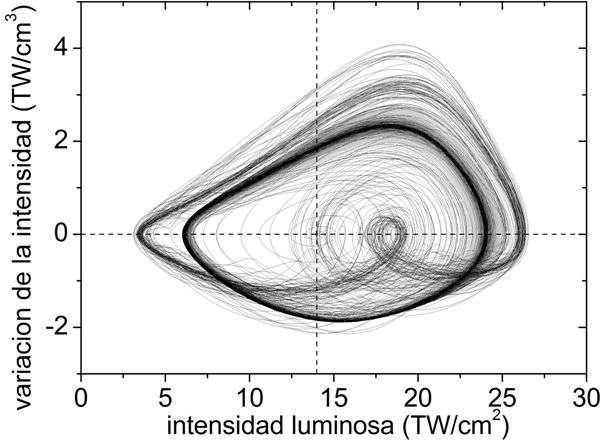Super-powerful light beams and the butterfly effect

Researchers at UPM have revealed the underlying order of chaos by observing very long and intense laser light beams and ionized matter in so-called "light filaments".
Observed for first time in solids in 1964 and in the air in 1994, the "light filamentation" phenomenon has been recently explained by researchers from the Complex Systems Group (GSC) at Universidad Politécnica de Madrid (UPM). Their method is similar to the one used by Edward Lorenz when he explained the unpredictability of weather as "the butterfly effect," which similarly describes a system's extreme sensitivity to initial conditions.
Thanks to the new understanding of the "light filamentation" phenomenon from the approach of complex systems and chaos theory, new research projects might lead to control of such light filaments and to improve their applications.
One of the goals of the science of complexity is to extract patterns of behavior where only disorder is observed, even in physics, economy or the social sciences. Experts from UPM, led by Professor Miguel Ángel Porras, suggested finding the underlying order to the complex phenomenon of light filamentation.
Contra the natural tendency of light to scatter in all directions, a laser beam of sufficient power tends to narrow and self-focus when it spreads out until nearly collapsing at a point. The high concentration of energy around that point ionizes the air, and a light filament emerges. This filament, a few microns in diameter, emerges where the light beam and the plasma channel move together, mutually trapped.

The light beam and the plasma channel interact in a highly nonlinear and dynamic balance over distances that can exceed tens of kilometers, until the electromagnetic energy ionized by the air is consumed.
What at first glance seems an intense beam of light is actually a complex behavior. If the laser power is high enough, rays can form in random positions moving forward in parallel. When there is just one ray, it sometimes appears continuous, but other times, it can appear and disappear intermittently along the way. The ray can either appear or disappear in an unpredictable way, depending on the precise conditions of its generation.
To understand the behavior of filaments is essential to optimizing related applications. Today, they are usually used to accurately cut and engrave micro- and nanostructures in solid volumes such as guides for other light waves. Additionally, researchers have shown that these light beams can trigger and channel electric shock storms, thus controlling the time and place where lightning occurs.
Likewise, these light beams can be used for remote sensing of components such as aerosols and ozone. The filaments generate terahertz radiation, which is used in medicine, and their interaction with certain molecules can produce X-rays.
The researchers involved have explained the different behaviors of the filaments in a unified way. The dynamic balance in the light filament occurs around an attractor that researchers have identified with a nonlinear Bessel beam. The chaotic or periodic behavior of a filament depends on the properties of this attractor.
When there is a chaotic attractor, such as the butterfly-shaped chaotic attractor, the filament shows the disorderly intermittency along its way and any fluctuation in generation conditions will allow researchers to predict where the attractor will appear or disappear. This new understanding of the phenomenon from the approach of complex systems and the chaos theory will boost new research to improve the control of light filaments and their applications.
More information: Miguel A. Porras et al. Underlying conservation and stability laws in nonlinear propagation of axicon-generated Bessel beams, Physical Review A (2015). DOI: 10.1103/PhysRevA.92.063826
Journal information: Physical Review A
Provided by Universidad Politécnica de Madrid





















